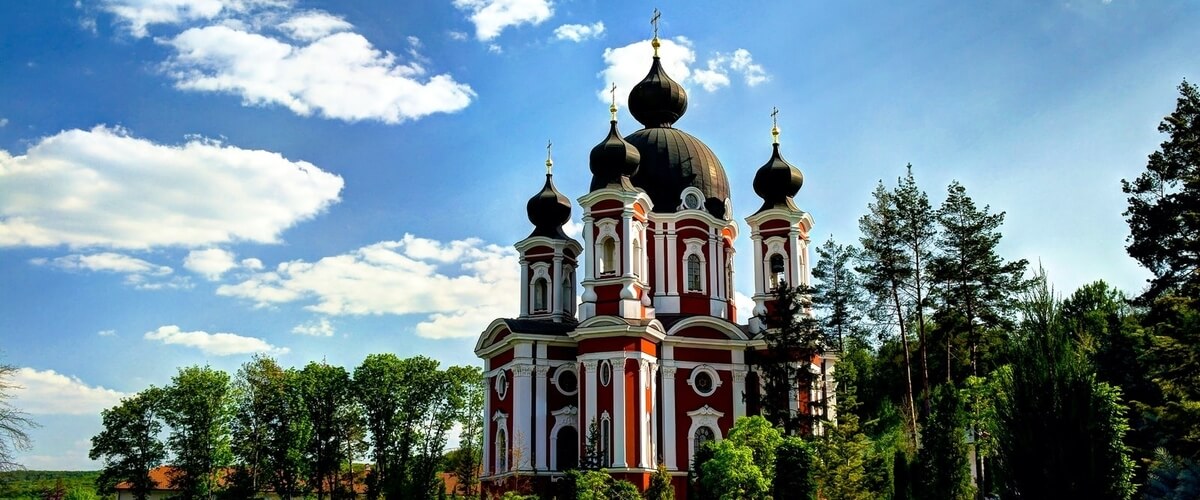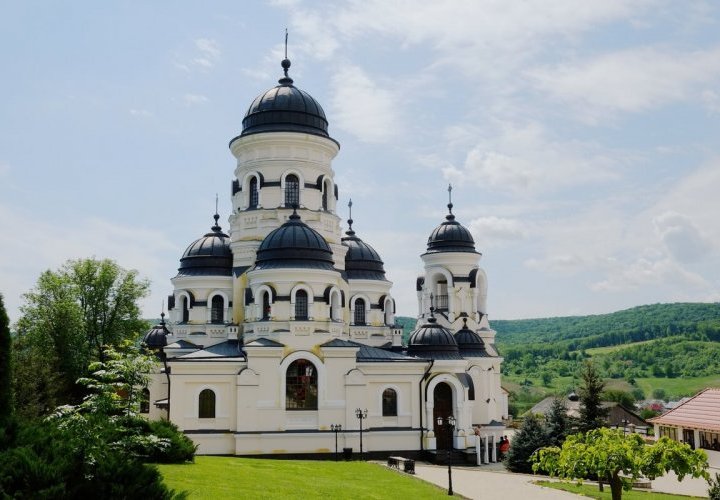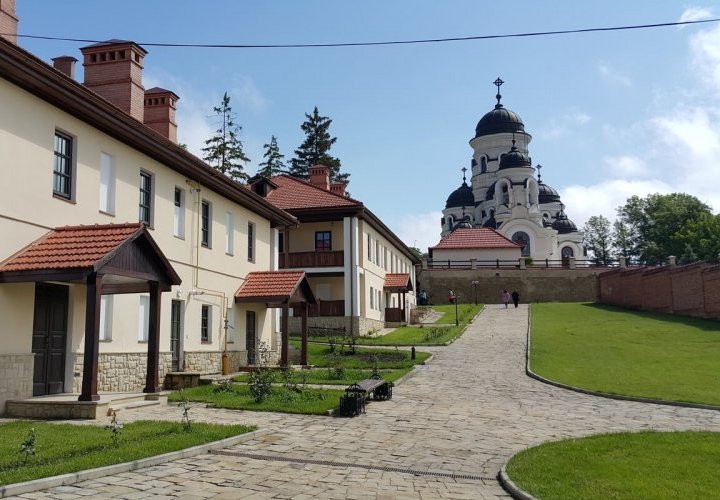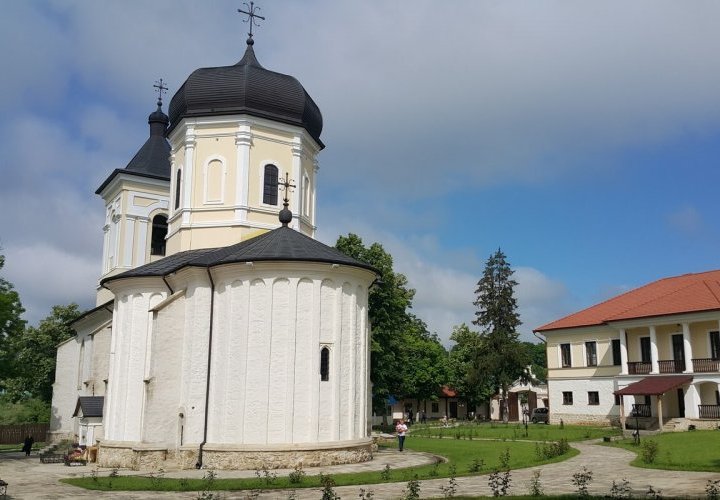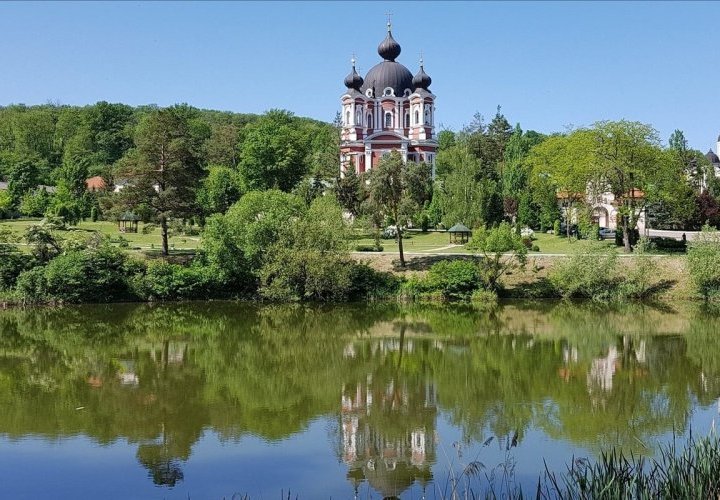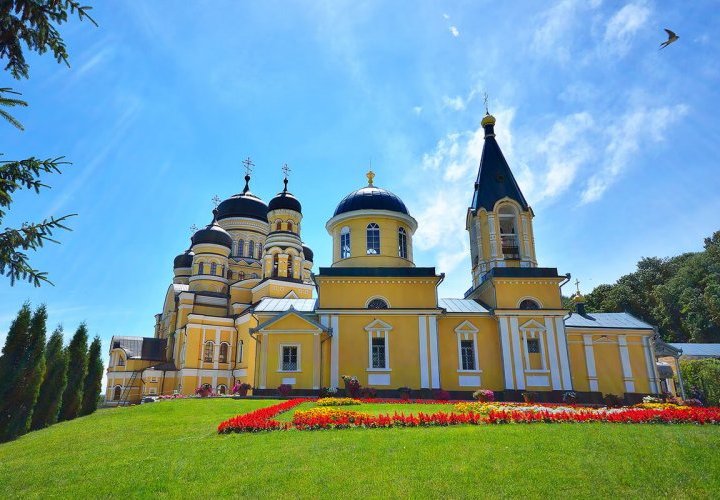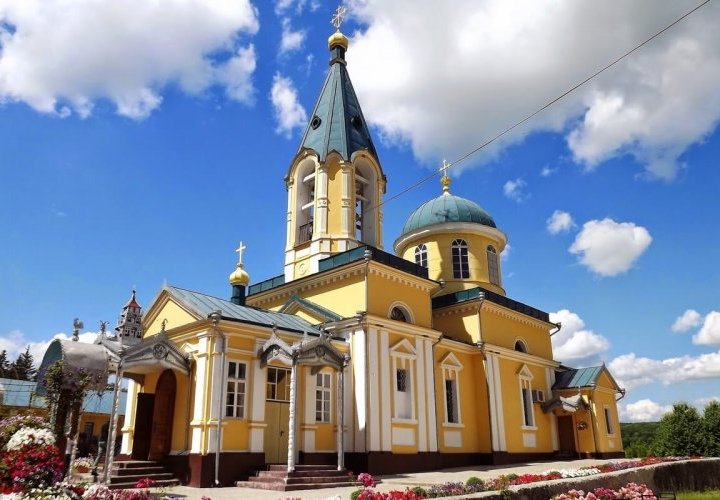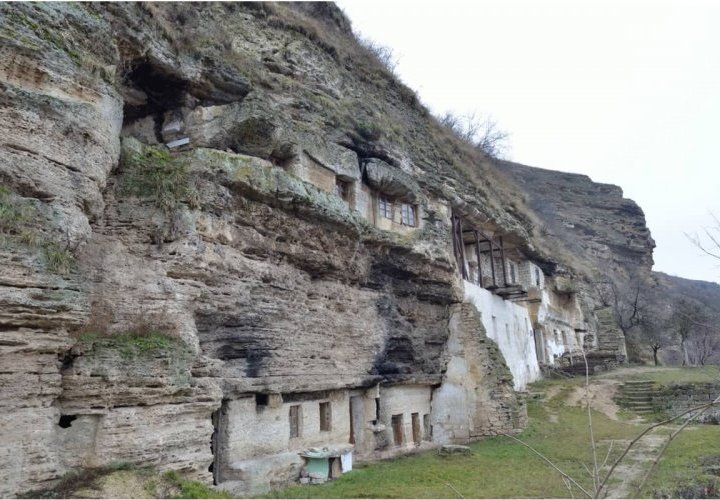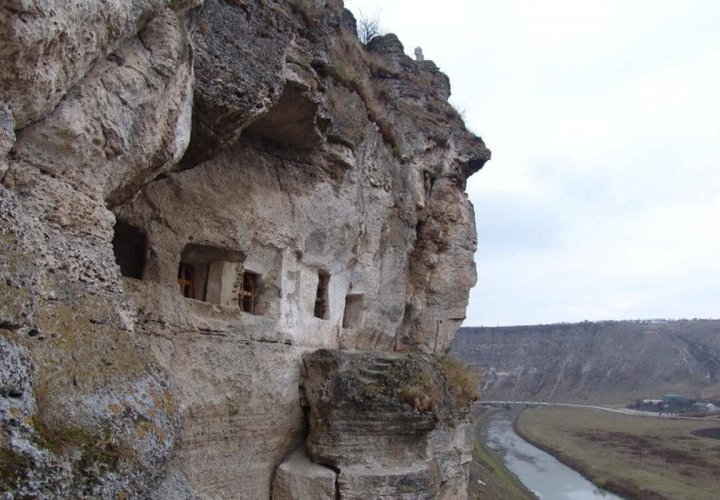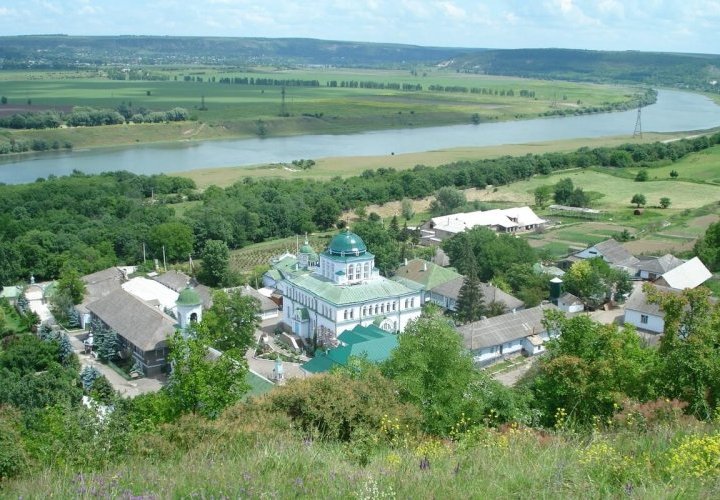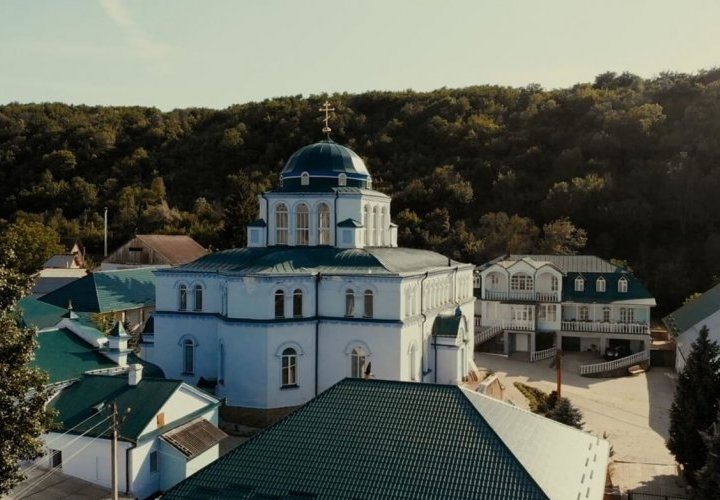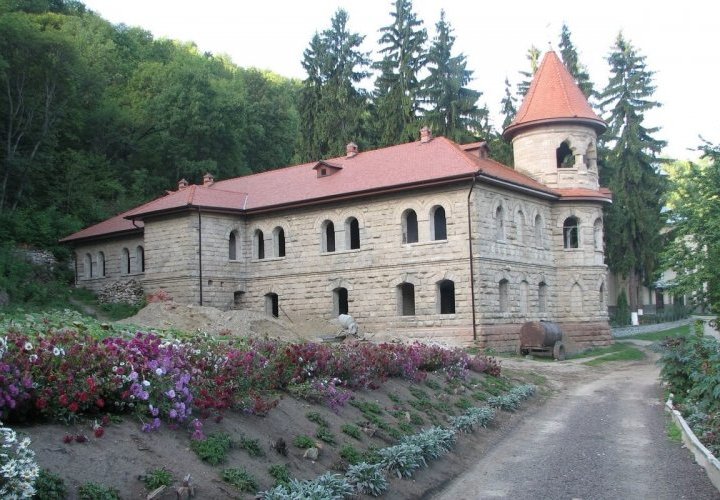Capriana Monastery located in Capriana village in a picturesque forested area once called Codrii Lapusnei, is one of the oldest monasteries in Moldova. The first documentary reference about it dates back to 1420. Built at first of wood, the monastery suffered from repeated Tatars or Turks invasion. Because it had the status of prince's monastery, several Moldovan princes took care of the monastic endowment. Between the years 1490 - 1496, Stephen the Great founded the stone church with the titular Saint “Assumption of Virgin Mary”. During 1542-1545, as recorded in Grigore Ureche's chronicle, the prince Petru Rares decided to perform extensive restoration works. Born in Lapusna area, Alexandru Lapusneanu carried out new fortification and development works and made important donations to the monastery. During a long period, more
Capriana Monastery acted as the residence of the Moldovan archbishop. Being closed and devastated in the post-war years, it was one of the first monasteries that reopened in 1989, becoming soon the symbol of national revival.
Curchi is a monastery of monks and one of the most important architectural monuments of Moldova. Its architectural ensemble was formed in the 18th - 19th centuries, being composed of five churches, two buildings with cells, the priorship, several auxiliary rooms and a skete located 500 m far from the monastery. It is surrounded by a high wall of stone, set with towers at each corner, creating the impression of a fortress. Curchi Monastery is considered to be founded in 1773 by the brothers Iordache and Mihail Curchi, who originally built a modest wooden skete, and later built the first stone churches. The two brothers are known to have embraced the monastic life later, as the monks Ioan, and respectively, Manasie.
The Summer Church or Big Church with the titular Saint “Nativity of Virgin Mary” was built between the years 1866 - 1872, more
following a project of the Italian architect Bartolomeo Rastrelli. The cathedral is the highest in Moldova – its middle dome reaches 57 m. Nowadays, Curchi monastery is one of the most representative monasteries in Moldova.
Hincu Monastery is a monastery of nuns located in Bursuc village. It was founded by the boyar Mihalcea Hincu in 1678 in order to fulfill his daughter’s request who decided to dedicate herself to the monastic life. She became a nun, taking the name of Parascheva.
The legend says that Hincu’s daughter refused to marry her father’s ally and left the parental home. She spent some time in a cave and was found by hunters. She refused to leave the cave. Then her father, Mihalcea Hincu, went there and asked her to come out of the cave. She promised she will get out of the cave only if she hears a church bell ringing. Thus, Mihalcea Hincu ordered for a church to be built. Later on, his daughter dedicated her whole life to God serving in this church.
After being closed for 43 years, Hincu Monastery starts operating again in 1992, more
soon becoming one of the most organized and visited monastic attractions.
Tipova Monastery is a cave monastery located on the right bank of the Dniester River, near Tipova village. It is considered one of the oldest monastic establishments on the territory of Moldova. The monastery that comprises 3 complexes, consists of many rooms, dug into the rock at an astounding altitude, representing an impressive museum in the open air. The first complex consists of several cells and a church dedicated to the “Holy Cross” and dates back to the 11th - 12th centuries. It is the furthest and the most difficult to access. The second complex includes “Saint Nicholas” church, carved into rock in the 14th - 15th centuries. The third and the largest cluster of cells, including 18 rooms joined by inner passes, is located around the church dedicated to the “Assumption of Virgin Mary”, and dates back to the 16th - 18th centuries. more
In 1828, on the hill above the cave complexes the church of the skete raised, which in 1919 is restored as monastery.
One of Tipova’s tourist attractions are also the waterfalls. The Tipova River, on its flow to the Dniester, creates many waterfalls with the height above 10 - 16 meters, which a long time ago used to move the millstones of many watermills.
Saharna Monastery is one of the oldest religious settlements in Moldova. The monastic complex is composed of a cave monastery (the Annunciation) and a stone monastery (the St. Trinity). The complex is located in a picturesque valley on the right bank of the Dniester River, near Saharna village. It is surrounded by rocks covered by forest. The legend says that the Virgin Mary left her footprint on the highest rock, named Grimidon. The history of the monastery is little known. The first prior of the holy place is considered the monk Bartholomew (1776-1790) who settled in a deep gorge, built a church, a few cells and enclosed the monastery with a stone wall. In Saharna you will enjoy the beautiful landscape created by the waterfalls. The River Saharna has 22 waterfalls on its way. The biggest waterfall is 4.5 m high.
Japca Monastery is a monastery of nuns located on the bank of the Dniester River, the only monastic settlement of the Prut and Dniester area operating continuously since its foundation. The monk Jezechil, who came to this place at the end of the 17th century is considered the founder of the monastery. Later on, in 1770, the abbot Theodosius built a wooden church at the foot of the rock. Thus, the monastery became larger, with a wide complex of cells. Since 1812, it comprises two churches and a wooden bell tower. In the 19th century, the wooden churches with the bell tower were rebuilt of stone.
The monastery has a beautiful location envisaged by the rocks above the monastery, the Dniester windings, which can be seen for a long distance, the oaks and gardens that surround it. The stone churches and the monastery from the cave skete, more
dedicated to “Exaltation of the Holy Cross”, are of great historical, architectural and artistic importance.
Rudi Monastery is a monastery of nuns located in the middle of a picturesque landscape not far from the Dniester River. The monastic complex represents an enchanting ensemble formed by all the monastery buildings, the center of which is the Holy Trinity church. It was built in 1777 on the property of the brothers Andronachi and Teodor Rudea with the blessing of the bishop Inochentie from Husi. The architecture of Rudi church has a well-pronounced style, reminding Moldovan churches of the 16th century.
The legend says that one of the great rulers of Moldova, Grigore Ghica, was sick for a long time and none of the doctors in the region could treat him. One day they heard about a spring with healing water, located near Rudi settlement, on the bank of the Dniester. He went there and after a while returned home cured. As a sign of gratitude, more
he would later build on this blessed place the famous Rudi Monastery.
